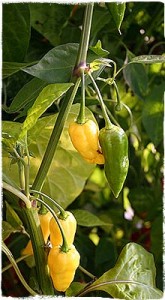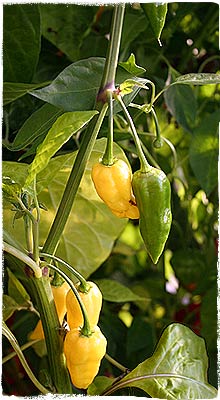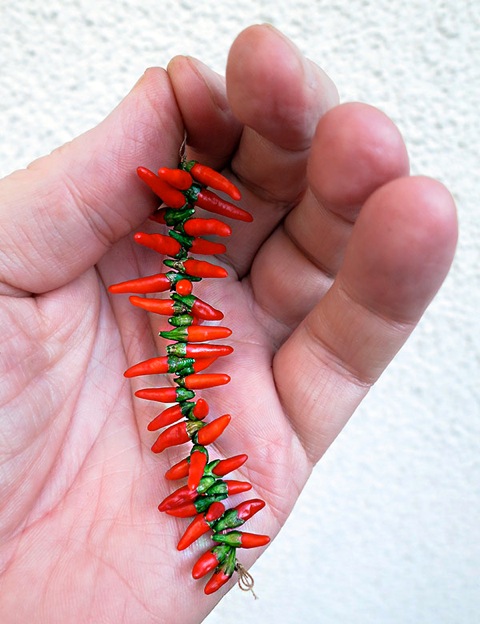Fatalii peppers and their brethren fall into the capsicum chinense family. Those brethren would be the habanero, Scotch Bonnet, and Red Savina. Family members are generally stealth bombers when it comes to heat: the heat sneaks up on you then drops a bomb in your mouth. That would be because of the high dehydrocapsacin capsaicinoid content. If you’ve ever tried a habanero or a habanero sauce, you know exactly what we mean. If you haven’t tried a habanero sauce, you should. Fatalii, though, is the black sheep that argues with the other peppers at family dinners, going against the grain with an instant burn up front; there’s no getting acquainted first. That follows after the intense heat when the fruity flavor of fatalii steps forward. Thus you have an interesting habanero alternative. The Fatalii pepper originates in Central Africa.

Mature and immature fatalii peppers
The grown peppers are on the thin-walled side and Fatalii pods are easy to dry for later use (if you’re in a humid climate, you may have to use a dehydrator, however). A retired coffee grinder turns dried Fatalii pods into a wonderfully hot and flavorful powder. It should be stored in a cool, dry, and dark place. They also freeze well, but their fruity fragrance is enjoyed best when fresh.
Latest posts by Mark Masker (see all)
- 2024 Scovie Awards Call for Entries - 07/07/2023
- 2024 Scovie Awards Early Bird Special: 3 Days Left - 06/29/2023
- 2024 Scovie Awards Early Bird Deadline Looms - 06/25/2023









